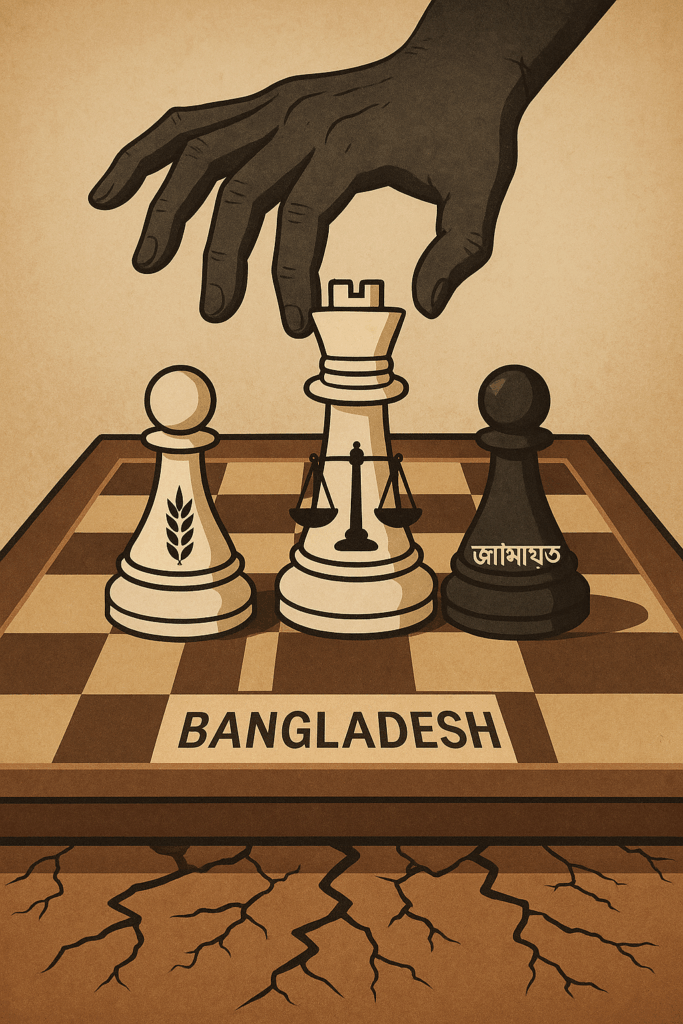
Introduction
In the labyrinth of South Asian geopolitics, religion, ideology, and militancy often intersect—creating fault lines that threaten national and regional stability. One organization that has remained a focal point in this matrix is Jamaat-e-Islami Bangladesh (JIB). While ostensibly a political party, JIB’s checkered past and alleged ties to extremist networks have raised serious concerns among security analysts, human rights observers, and governments across South Asia.
This article investigates the alleged affiliations between Jamaat-e-Islami Bangladesh and various South Asian militant groups, contextualizing these connections through history, ideology, funding patterns, and incidents of violence.
1. Historical Roots of Radicalism
Jamaat-e-Islami’s roots in Bangladesh date back to pre-independence East Pakistan, when it opposed the liberation of Bangladesh in 1971. The party collaborated with the Pakistan Army, forming and operating Razakar, Al-Badr, and Al-Shams paramilitary forces—groups accused of heinous war crimes during the Liberation War.
After independence, the newly formed Bangladesh government banned Jamaat for its betrayal. However, the ban was lifted in 1979 under military rule, allowing it to re-enter the political mainstream. Despite this, its ideological base remained committed to the vision of a pan-Islamic caliphate, rather than a secular democratic Bangladesh.
2. The Jamaat-HuJI-B Connection
One of the most troubling affiliations emerged in the late 1990s and early 2000s with Harkat-ul-Jihad al-Islami Bangladesh (HuJI-B), a banned Islamist terrorist organization.
- HuJI-B, allegedly funded by al-Qaeda and supported by elements within Pakistan’s ISI, has been implicated in numerous attacks in Bangladesh, including the 2001 Ramna Batamul bombings and the 2004 grenade attack on Sheikh Hasina.
- Several HuJI-B operatives arrested over the years have confessed to having ideological and operational links with Jamaat-e-Islami leaders.
- Notably, Maulana Abdus Salam, a prominent JIB figure, was reportedly in communication with HuJI-B operatives.
Though Jamaat has denied these connections, intelligence sources and independent journalists have pointed to a shared ideological base and common enemies—notably secular politicians and liberal civil society voices.
3. Links to Indian and Pakistani Militancy
JIB’s international ties have also drawn scrutiny.
- Lashkar-e-Taiba (LeT): Some analysts argue that Jamaat’s support base in border areas has been exploited by LeT for logistical purposes. While no formal links have been publicly proven, Indian intelligence agencies have long flagged JIB’s student wing, Islami Chhatra Shibir (ICS), as a potential recruitment ground.
- Jamaat-e-Islami Pakistan and Jamaat-e-Islami Hind: These groups share historical and ideological lineage with JIB. While organizationally distinct today, they maintain close religious and doctrinal affinities.
- These affiliations offer transnational credibility and resources—often channeled through charities, NGOs, and religious schools.
4. Funding and Charity Fronts
A key method through which Jamaat allegedly maintains militant ties is via foreign-funded Islamic charities and NGOs. Some of these organizations have been blacklisted by Western governments for financing terrorism.
- Rabita Trust, for example, was linked to both Jamaat officials and terror financing networks in South Asia.
- Intelligence reports in Bangladesh and India have pointed out that madrasas in JIB strongholds (notably Rajshahi, Sylhet, and Chittagong) have received funds from Gulf-based donors with radical agendas.
5. The Role of Islami Chhatra Shibir (ICS)
Jamaat’s student wing, Islami Chhatra Shibir, has often been accused of violent campus politics, including attacks on rival student groups and suspected involvement in militant indoctrination.
- Several former ICS members have reportedly joined extremist groups like Ansar al-Islam and Neo-JMB.
- In 2013, a leaked intelligence report described ICS as a “feeder network” for more radical outfits.
The overlap between political activism and radical militancy among ICS cadres continues to alarm national security agencies.
6. Crackdown and Resurgence
After the 2013 Shahbagh Movement, which demanded capital punishment for Jamaat’s war criminals, the Bangladeshi government intensified its crackdown on the party. Senior leaders like Ghulam Azam, Motiur Rahman Nizami, and Delwar Hossain Sayeedi were arrested, tried, and in many cases, executed for war crimes.
Yet, Jamaat has not disappeared. Many of its operatives have reportedly gone underground or reorganized under new names, including:
- Amar Bangladesh Party (AB Party) – widely believed to be a political reincarnation of JIB.
- Online Islamist cells that continue to propagate radicalism via encrypted platforms and religious forums.
7. Geopolitical Implications
The alleged ties between Jamaat and South Asian militant groups are not merely domestic concerns. They carry major implications for regional security.
- Bangladesh-India relations have suffered whenever cross-border militancy has flared up.
- Western and regional powers continue to monitor the radical ecosystem in Bangladesh, especially in light of global jihadist movements seeking safe havens.
- If left unchecked, Jamaat’s ideological infrastructure could once again serve as a pipeline for South Asian militancy, jeopardizing not just Bangladesh but regional peace.
Conclusion
While Jamaat-e-Islami Bangladesh continues to project itself as a legitimate political party, its historical ties, ideological rigidity, and alleged affiliations with South Asian militant groups present a troubling portrait.
For Bangladesh to move forward as a secular, sovereign republic, it must remain vigilant against entities that blur the line between political opposition and ideological extremism. Accountability, transparency, and regional cooperation remain key to dismantling this dangerous nexus.